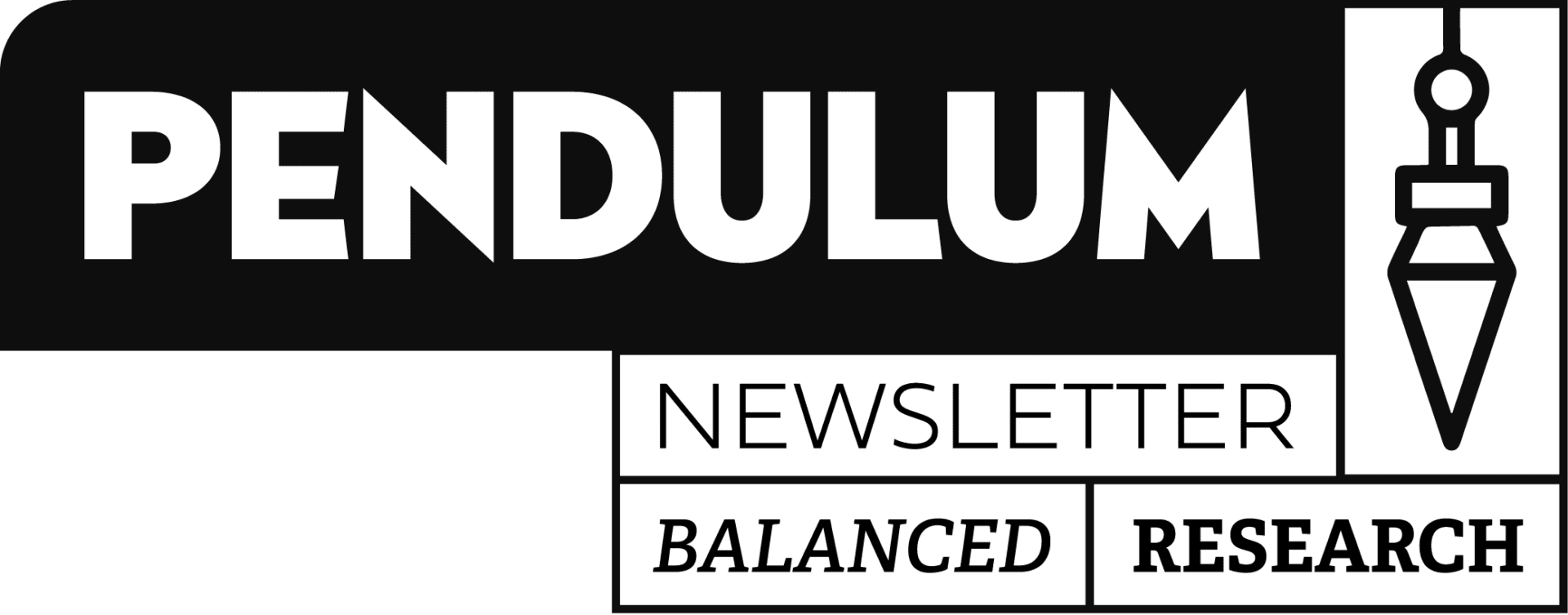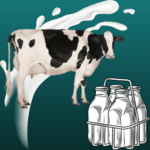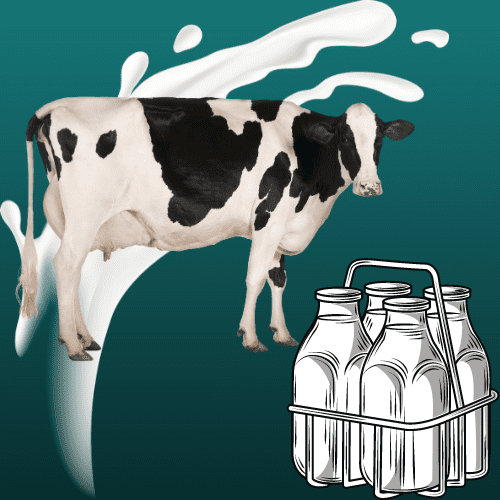
Some of the first ships that landed in the American colonies carried dairy cows. In early America, access to dairy and production was much like in Europe. Before pasteurization, it was only available with access to farms, and mainly consumed by babies or small children as a last alternative when the mother couldn’t nurse.
It was the Industrial Revolution that changed how milk was being produced and used, along with many changes in food production like the creation of white bread. New practices allowed for milk to be made in larger quantities and transported. This was coupled with mothers beginning to work in factories, and reaching for something convenient and nutritious for children. The perception of milk as a rural or pastoral drink shifted to seeing it as accessible, cheap, and nutrient-dense in urban homes at the turn of the century. It also came with nostalgia for simpler days, and the promise of robust, pastoral, health.
Even though pasteurization was invented in the 1850s, it wouldn’t be broadly applied to milk until the 1930s and pasteurizing milk was not without controversy. In 1859 one-third of young children in New York City died from contaminated milk. Thousands more died in Boston and Chicago. The milk was raw, but that was far from the only problem. Urban dairy entrepreneurs used new machinery to keep cows in confined spaces, living in their own manure adjacent to whiskey distilleries.
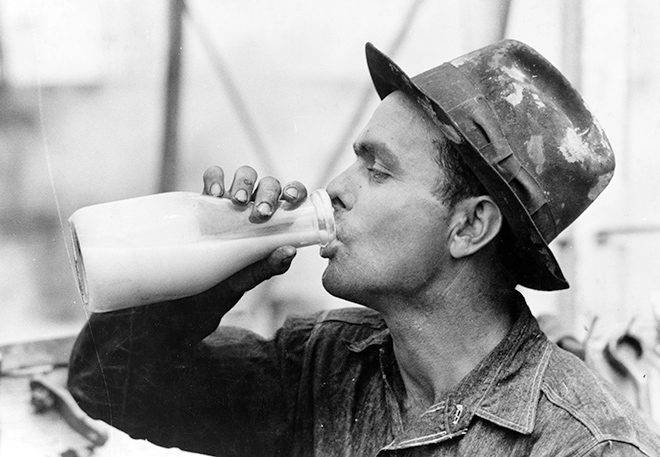
Instead of grazing on grass, these were the first cows put onto a corn and barley diet – consuming the leftover slop from the distillery. The cows were deprived of water to encourage them to eat the new diet. The milk from sickly cows had a blueish tint. This was amended by adding plaster, chalk, and dye to the milk. It was also thinned out by adding water from stagnant sources, sometimes growing visible worms, moss, and all sorts of bacteria in the mixture. It wasn’t unusual for mashed cow brains to be added to cream to make its color and texture appear creamier. It also solved a business issue that brain sandwiches had gone out of fashion and brain wasn’t selling like it used to. These milk concoctions were sold as, “Pure Country Milk”.
Formaldehyde was also frequently used to increase shelf life, creating a “milk poison”. In the same rhetoric we often see with additives and chemicals today, small amounts of formaldehyde were deemed safe. Doctors who would later support pasteurization at first advocated for chemical preservation instead, fearing pasteurization would strip milk of nutrients. Given this permission and no oversight, the dairy industry gradually added larger amounts of formaldehyde to milk, and chemists invented new formaldehyde-based formulas like “Iceline” to mask its heavy formaldehyde use. Hundreds of infants died from formaldehyde poisoning before the practice was banned and enforced in 1906.
Growing awareness of the problems stemming from industrialized agriculture with advocates like John Harvey Kellogg and Upton Sinclair created a desire to return back to pure, non-industrialized foods.
During Prohibition, milk was encouraged as a wholesome alternative to alcohol. Chicago bootlegger and gangster, Al Capone, acquired a dairy business and is said to have exclaimed to his associates, “by god boys, we’ve been in the wrong racket all along!”. A more favorable fable of Al Capone’s reasons for getting into Big Milk is that he was tired of seeing children and mothers at risk because of bad or expired milk and decided to do something about it. Al Capone invented the “Grade A” rating as the first enforced quality control for milk. He also invented the expiration date on bottles, earning him the nickname “bottles”.
Al Capone also saw opportunity in the lack of regulation in the milk industry. He was quick to import cheaper milk from Wisconsin to Illinois and bottle it as local milk – driving out local mom and pop dairy farms and forcing out milk worker’s union. His gang kidnapped the milk union’s president at the time, then used the ransom money to pay the mafia attorney. The Capone network then strong-armed New York pizzerias to only use cheese made from their milk, known as “rubber cheese” and far inferior in quality to the mozzarella being used before. Some pizzerias still carry a sign that says “no slices” which is said to be code for adhering to mob rules.
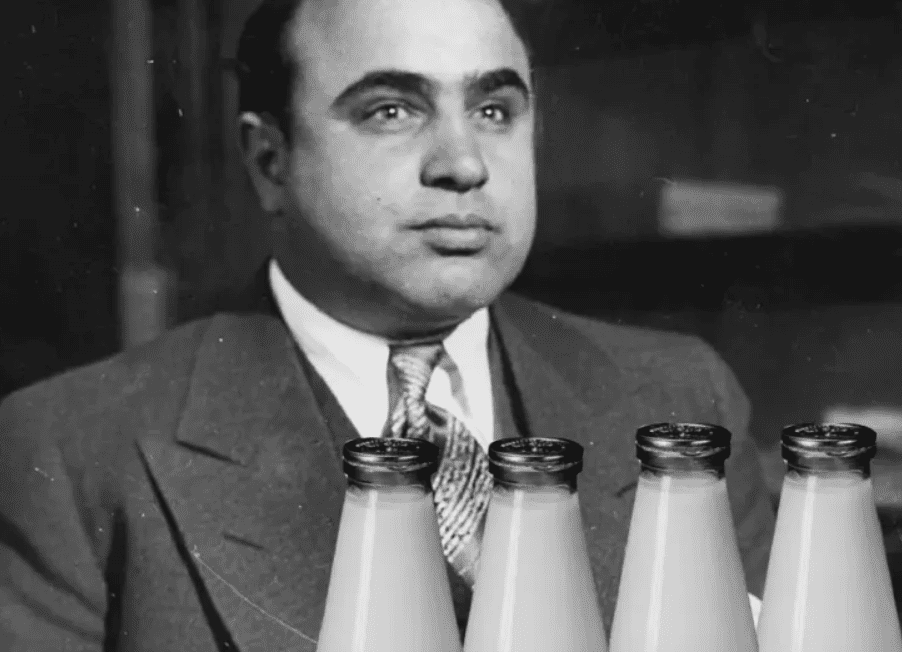
At the same time, milk was heavily marketed in women’s magazines by medical patent companies that were starting to develop baby formula for working mothers. Milk became safer and more regulated, and combined with Kellogg’s promotion of milk as the ideal cereal companion, milk became an American food staple.
Despite Capone’s efforts, milk safety was still a serious issue. Many professionals were against pasteurization, including Mayo Clinic doctors who were concerned it would break down beneficial enzymes and strip milk of nutrients. Eventually, accessing safe milk won out with Chicago – the first city to mandate only pasteurized milk being sold in 1916, inadvertently outlawing raw milk. Slowly it caught on with most states passing similar bills, making milk America’s first processed food.
Once farmers were forced to invest in pasteurization, they almost immediately invested in milk homogenization equipment as well. Homogenization removes the fat from milk and makes it easier to create a uniform milk product from several different farms. This was the Henry Ford moment for milk – it paved the way to an unimaginable mass production of milk.
In the two decades leading into WWII, milk transitioned off the farm and into a uniform industry that was able to partner closely with the USDA. In the second half of the 20th century to the present day, this partnership is still paramount to milk’s role in the American diet. Next week we will dive into the role of milk to strengthen soldiers during WWII, its entry into the school system, and Alta Dena’s surprising raw milk battle.
